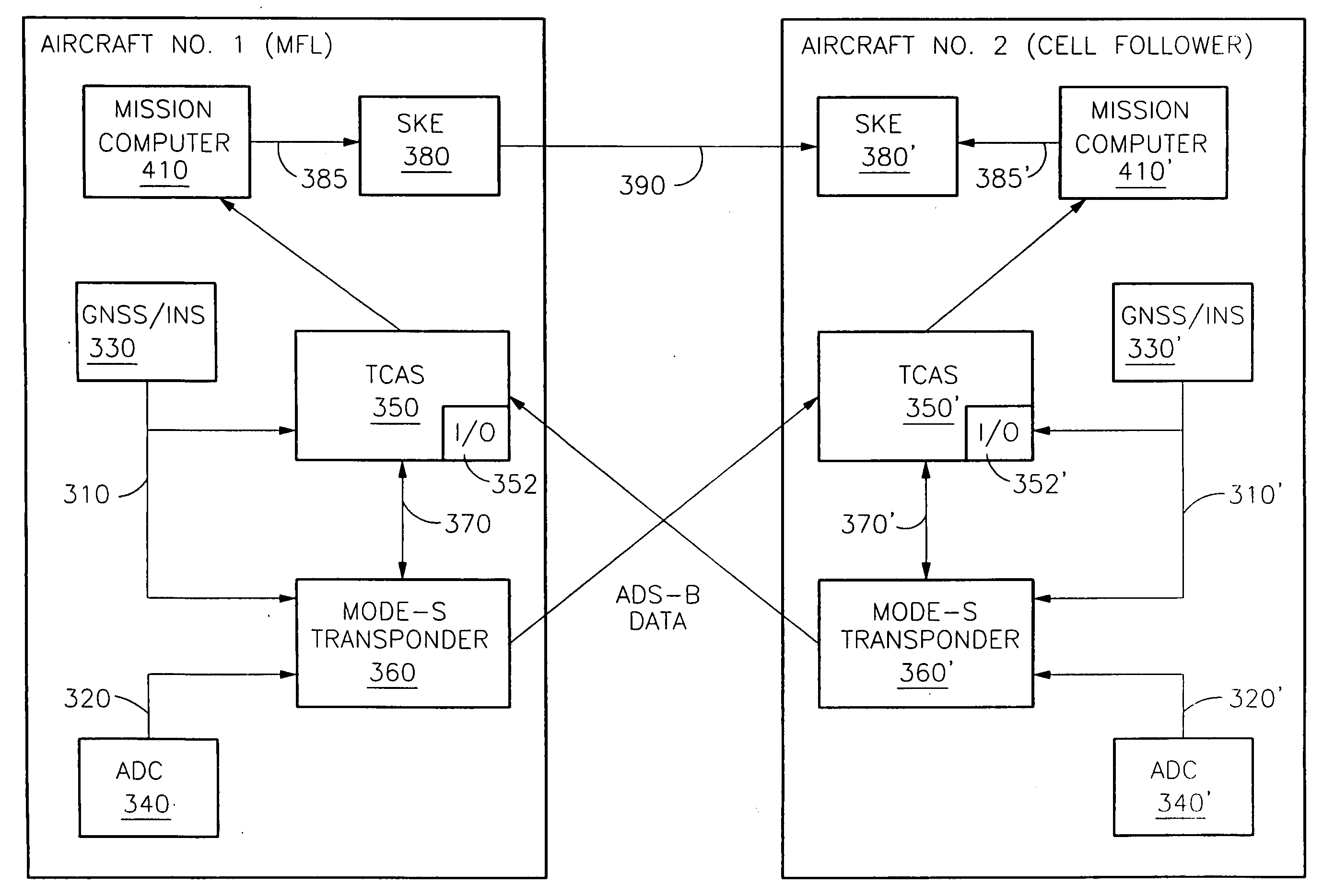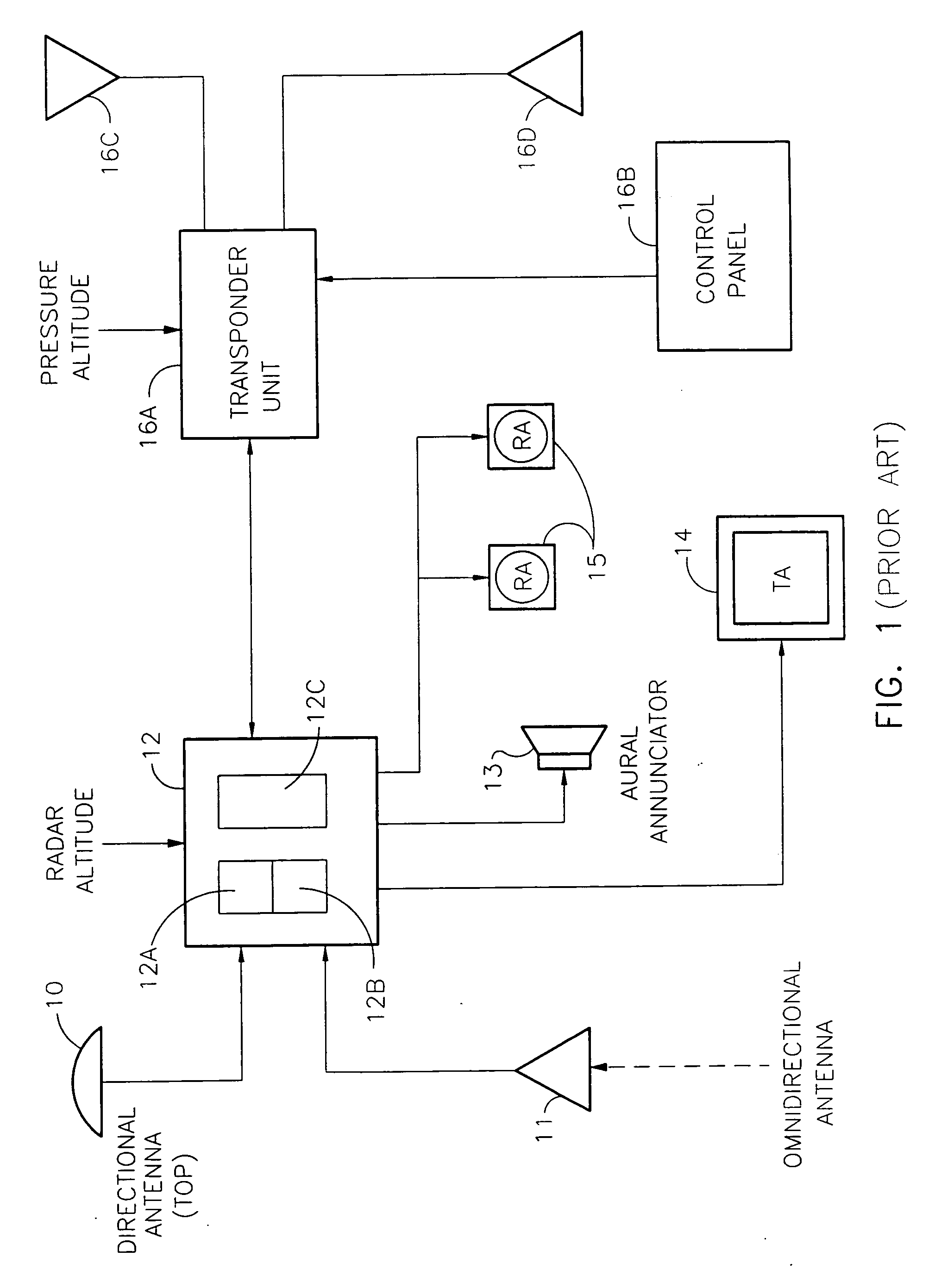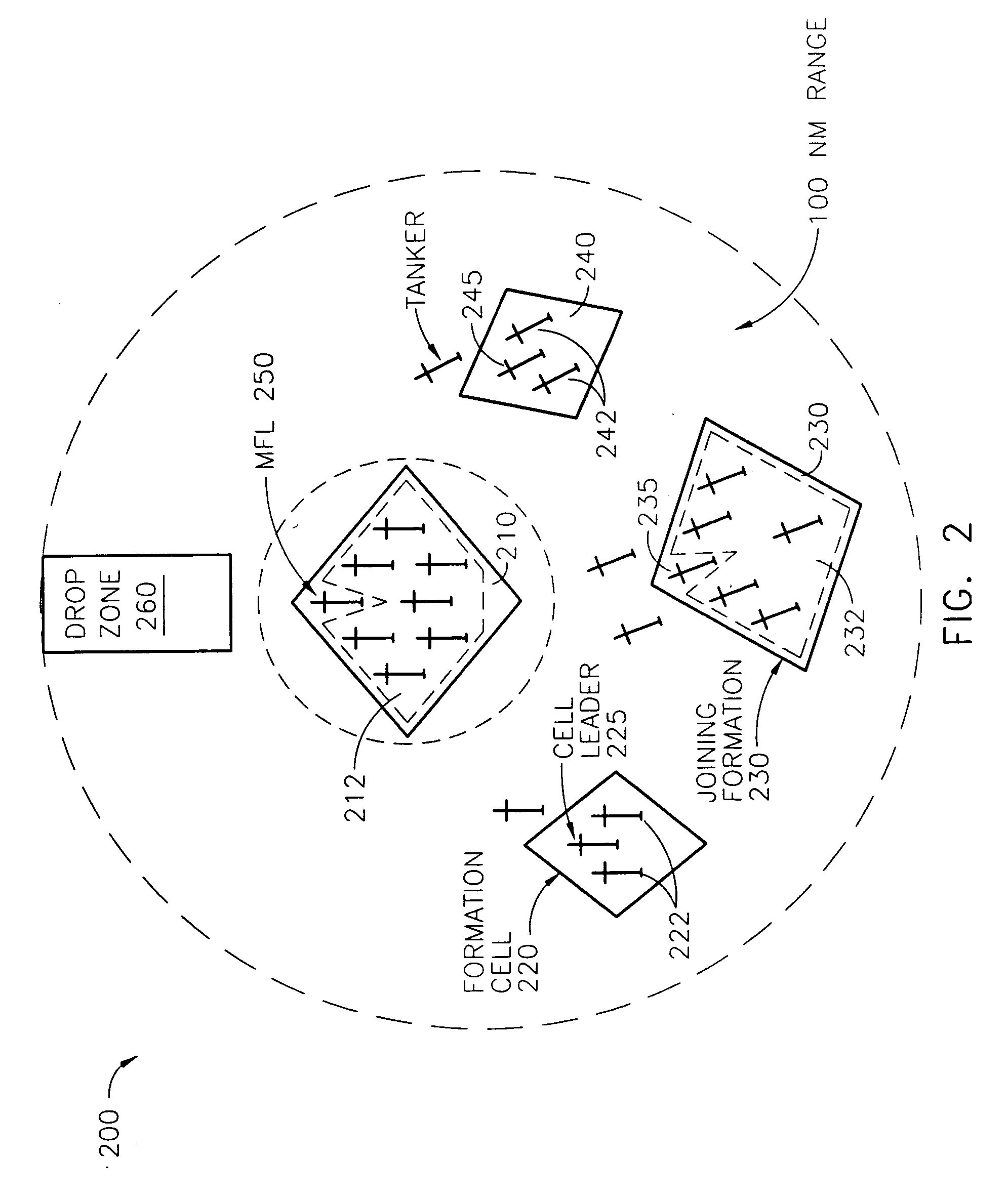Close/intra-formation positioning collision avoidance system and method
a collision avoidance and intra-formation technology, applied in the direction of direction finders, instruments, aircraft traffic control, etc., can solve the problems of reducing the effectiveness of maintaining precise position/separation criteria with respect to other aircraft and obstacles, unable to fly imc, and unable to avoid collisions, so as to reduce the amount of rf interference and reduce the range
- Summary
- Abstract
- Description
- Claims
- Application Information
AI Technical Summary
Benefits of technology
Problems solved by technology
Method used
Image
Examples
Embodiment Construction
[0031] A passive Collision Avoidance System (CAS) is implemented by the present invention to maintain selectable separation between formation cells and follower aircraft within each cell using an integrated control system. The passive CAS is attained by the present invention using centralized control and decentralized execution of multiple aircraft formation cells. The present invention uses TCAS and Global Positioning System (GPS) Squitter data from a Mode-S transponder. The terms GPS squitter, Mode-S squitter, and ADS-B mean the same thing and are used interchangeably throughout the description of the present invention to describe extended data transmission.
[0032] Assembling a large number of formation aircraft (e.g., for a massive size military airdrop in IMC and night flying conditions) is a positioning / separation control problem that is implemented by the present invention in two parts:
[0033] 1) Modification or augmentation of a conventional TCAS, e.g., Honeywell TCAS-2000 (p...
PUM
 Login to View More
Login to View More Abstract
Description
Claims
Application Information
 Login to View More
Login to View More - R&D
- Intellectual Property
- Life Sciences
- Materials
- Tech Scout
- Unparalleled Data Quality
- Higher Quality Content
- 60% Fewer Hallucinations
Browse by: Latest US Patents, China's latest patents, Technical Efficacy Thesaurus, Application Domain, Technology Topic, Popular Technical Reports.
© 2025 PatSnap. All rights reserved.Legal|Privacy policy|Modern Slavery Act Transparency Statement|Sitemap|About US| Contact US: help@patsnap.com



